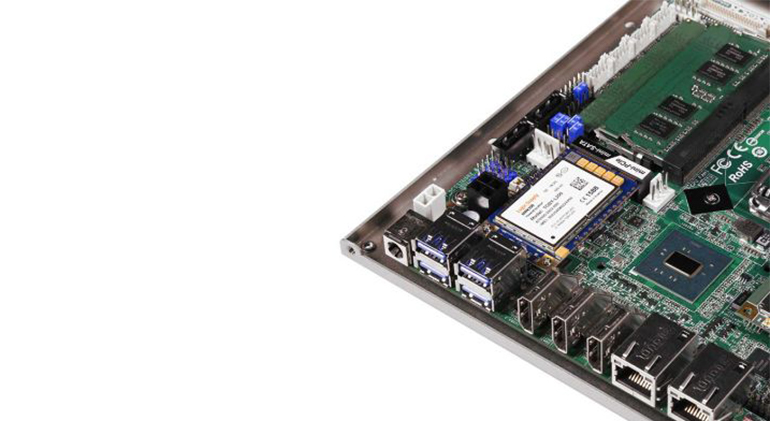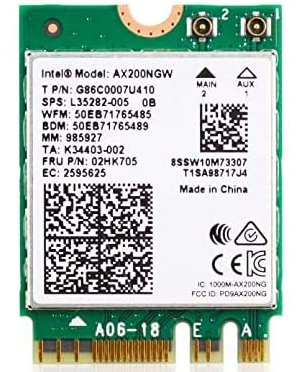How to Choose The Right Wireless Hardware
When choosing wireless networking hardware to connect your new computer to a wifi network, your available choices can be overwhelming. Not only must you choose the right wifi card, but you also need to ensure you have the right antenna (or antennas) for your needs.
The specific wifi card for PC and antenna combination will generally be based on the answers to these 3 key questions:
- What will you be using the network-connected device for?
- What kind of wireless network are you connecting to?
- How far away are you from the source signal?
If you know the answers to these basic questions, choosing the right network solution can be fairly easy. Skylar breaks it down in the Tech Edge video below, or keep reading to learn more.
Selecting a wifi card for your PC
Compatibility with computer and OS
The first step in choosing a wireless or wifi card for your PC is making sure it is compatible with your computer and operating system. Most wireless cards plug into Mini PCIe and M.2 Key-E for wifi. (For cellular connectivity, you would use the M.2 Key-B. How to select hardware for cellular connectivity will be covered in a future article.) If your computer has this slot, then the card will be electromechanically compatible. Most cards today are PCIe based, so it’s important to make sure you’re buying a wifi card and motherboard that have the corresponding connections required.
Some cards use PCIe for the wifi and the USB for Bluetooth connectivity. When choosing a card that supports both, be sure the slot you are inserting it into supports both PCIe and USB signaling.
Next, you must make sure there are drivers available for that card and the operating system you plan to use (Windows, for example). At OnLogic, we make sure to choose cards that have a broad range of compatibility, with most of our wifi cards supporting both Linux and Windows operating systems.
Wifi hardware compatibility with network
Once you know the wifi card will work with your computer, you need to ensure it’s right for the kind of network you’ll be connecting to. Wifi cards are broken down to the technology they have; for example, the newest cards feature Wi-Fi 6. The legacy terms for wireless networking cards are broken down into different variants, represented by 802.11 (an IEEE specification) followed by one or more letters. For example, the modern wireless standard is 802.11ax (now known as Wi-Fi 6). Previous versions included “b”, ”g”, ”n”, and “a”. Excluding “a”, wireless networks are cross compatible, meaning a “g” enabled card can connect to an “n” network (provided that function is not disabled by your router or IT team). However, if you want the full bandwidth and features of the newest networks, you need a matching wireless card.
You can find the newest generations of Wi-Fi and what they originally were called on the Wi-Fi alliance website.
Also important for some customers is the brand of the chipset running the card. Examples of these include Intel, Broadcom, and Qualcomm Atheros. However, the manufacturer of the card doesn’t necessarily indicate specific features; many times it comes down to experience and personal preference and what your application requires.
Bluetooth
The last thing to check is if the card includes Bluetooth onboard. Although most modern wireless cards come with it, some still don’t. Bluetooth is used to exchange data over short distances and it is most often used to connect wireless peripherals.
Like Wi-Fi, Bluetooth has multiple versions available, with the most current version being 5.3. Bluetooth is also backwards compatible, meaning all versions can interconnect with each other. However, as with wireless internet, you lose some features doing this.
Which wireless antenna do I need?
Antennas are made up of two pieces; a pigtail cable which goes from the internal wireless card to the exterior of the chassis, and the actual antenna. When you add wireless hardware to any OnLogic computer, the pigtail is included by default. However, an external antenna is not included.
One of the most important antenna specs to consider is gain. Gain refers to how well the antenna amplifies the signal it’s receiving. This is measured in decibels (dB). The higher the dB, the better the antenna will perform in strengthening weak signals. The typical range for screw-on antennas is 2-7dB.
Single band vs dual band antennas
Antennas are also classified by what frequency bands they are tuned to amplify. Any wireless technology has a frequency band that it needs to operate within. Bluetooth operates in the 2.4Ghz band, as do legacy wireless networks.
Wi-Fi 4 and beyond may also operate in the 5Ghz band. When buying an antenna, you need to ensure these bands are covered. At OnLogic, we sell single band and dual band versions of our antennas. Single band covers just 2.4Ghz while a dual band antenna covers 2.4Ghz and 5Ghz bands.
The good news with frequencies is that they don’t change. That means your IT department or router can’t inadvertently choose to operate outside of those two bands.
One question we get often is, “If Bluetooth and Wireless are operating in the same frequency range, won’t they interfere?” This is a great question, but in reality, the two aren’t actually operating at the exact same frequencies. The 2.4Ghz range has several separate frequency bands or channels that devices can use, and many devices dynamically change channels to help prevent interference and increase performance. A 2.4Ghz antenna can cover all of these frequencies (known as channels).
Additionally, Wi-Fi 6 introduces OFDMA (Orthogonal Frequency Division Multiple Access) where a specific channel can split the bandwidth evenly across up to 30 users without expecting interference. This is great in applications where many users are crowded in one area and don’t necessarily need all of the channel’s bandwidth.
What size antenna, and how many do I need?
So, what about the physical size of the antenna? You’ll want to make sure that the size of the antenna works in the footprint in which the computer will be operating. Size doesn’t necessarily affect the performance of the antenna, so always check the dB rating of the antenna you choose.
The last thing to consider when selecting antennas is deciding how many you need. Generally speaking, wireless cards have two antenna connections and you should use both. Although it is possible to get away with using one antenna if the router or signal source is close enough, you should usually stick to the number of antennas recommended by the card manufacturer.
Choosing the right wireless solution can be easy when following the above guidelines, and knowing your usage situation goes a long way in ensuring you choose the ideal hardware. If ethernet or wifi isn’t an option, you should know that there are other options. For example, 4G-enabled industrial computers might be a great fit.
If you have questions about which wireless card and antenna combination would best suit your needs, contact OnLogic’s highly capable technical team who will quickly identify the right wireless solution for your unique project.
Note: This blog was originally posted on February 17, 2015. It was updated for content on September 12, 2022.
Get the Latest Tech Updates
Subscribe to our newsletters to get updates from OnLogic delivered straight to your inbox. News and insights from our team of experts are just a click away. Hit the button to head to our subscription page.
Share
More Articles
OnLogic Industrial Computers
Discover OnLogic's multitude of industrial computers that will help you to advance your IoT project
Learn more at OnLogic.com
OnLogic Industrial PCs: Designed to last. Built to order. Delivered in days. Visit our online store at OnLogic.com







